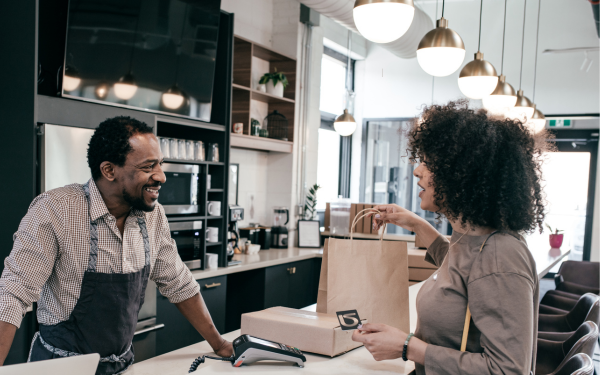Just under a decade ago, renowned global analyst McKinsey published an article entitled Making Stores Matter in a Multichannel World. While light on practical detail and examples, read ten years on, this piece still feels remarkably relevant. Prophetic, even.
Because if there’s one challenge physical retail faces above all others at present, it’s working out ways to keep customers coming through the doors when so much is available at the touch of a button online.
One piece of advice McKinsey offered all those years ago still stands out. Reinvent the in-store shopping experience, they urged bricks-and-mortar retailers.
Ten years on, experience is the ace physical retail still has up its sleeve. Yes, consumers can buy every kind of product they want online these days, and get it shipped straight to their door. That’s hard to beat in terms of convenience. But what about when people want more than convenience? What about when they are seeking a unique shopping experience that adds intangible value to a purchase, or when they want something that is memorable, fun, enlightening even?
A decade after McKinsey urged store owners to double down on the in-store experience, what we have now is technology that supports taking it up another level. Here are four examples of how.
Service-led retail
Service-led retail involves shifting the focus from simply selling goods in a store to providing services that consumers simply couldn’t get if they bought the same products online. Examples include fashion boutiques that also offer tailoring services, grocery stores that have kitchens preparing made-to-order meal boxes, or hardware stores where you can get trade-level expertise planning out your next DIY project.
Experiential retail
Adjacent to service-led retail, experiential retail focuses on providing experiences that are not just useful, but memorable and engaging. The idea is to make the experience worth heading to a store for in its own right. That’s great for forging strong bonds with customers and, in today’s social media age, building brand equity through word-of-mouth recommendations.
The best retail experiences are often interactive, which helps to immerse the customer in them. And this is where we can see technology playing a big role, with examples such as Augmented Reality (AR) to expand the in-person shopping experience digitally, and gamification to add extra layers of engagement and fun.
Multi-purpose retail spaces
Another way to add value to the in-store retail experience is to give customers opportunities to do more than just shop when they visit. This can be as simple as having a coffee bar in your bookstore, or similar retail-hospitality blends. But this approach works best when there is a close synergy between the retail offer and whatever else you add. Thinking back to the fashion boutiques with alteration and repair services and grocery stores with kitchens, you could extend this into tailoring and cookery classes. Or provide pilates and yoga spaces at your health store, or open mic events at your music store.
Personalization
Finally, all of the above approaches to revamping the in-store experience can be further enhanced by one thing – aiming to give every individual customer what they want. As per McKinsey again, 71% of consumers now expect personalized interactions when they engage with brands (thanks again, ecommerce!), while the fastest-growing companies drive 40% more revenue from personalization than the slowest growing outfits.
Effective personalization at scale depends on having the data that tells you who your customers are and what their preferences are. That’s relatively straightforward to gather online, but what about in physical retail?
Well, modern consumers are so onboard with the benefits of personalization that they are willing to share their personal information with brands, so long as they can see a clear benefit. Loyalty schemes, subscriptions, signing up for events or special offers all work just as well in store as online, and can be administered via POS (self-service kiosks are particularly useful).
By connecting who your customers are to transaction data, you can build personalized profiles and make them available to staff (or when someone uses a kiosk or interactive screen) to make carefully curated recommendations and offers. Think of the power of recommending a unique new recipe meal kit to a customer based on their previous purchases, or offering them a discount in sewing classes if they regularly bring garments in to be adjusted. Or even just knowing their favourite drink when they sit down for a latte over a new book! Personalization helps to tie all the benefits of experience and service-focused retail together.




